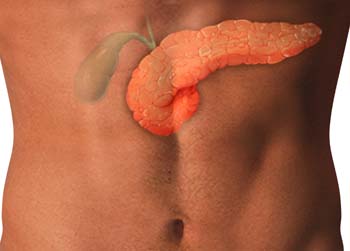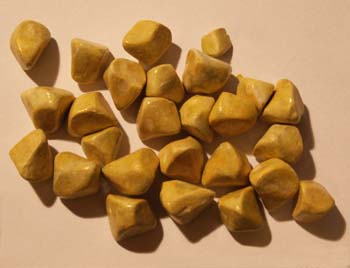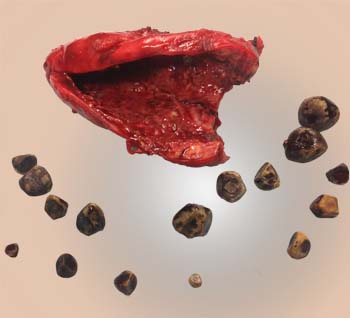
Cholelithiasis (another name for Gallstones) is derived from the greek word 'chol'- bile + 'lith'- stones+ 'iaisis'- process. These stones occur within the gallbladder, a pear-shaped sac in the right upper quadrant of abdomen under the liver. Bile is a liquid formed in the gallbladder that aids in digestion of fat and moves from gallbladder to the small intestine through cystic and common bile duct.

Gallstones differ in size: they can be as minute as a grain of sand or more than an inch. Some individual develop a single gallstone while others may have multiple gallstones at the same time.
Types of Gallstones
- Cholesterol stones- More than 70% of gallstones are formed from cholesterol. They are very common, appear yellow in colour and are oval in shape

- Pigment stones (black or brown) - They usually account for the remaining 30% of stones.
- Mixed stones- Cholesterol constitutes 20-80% of the composition of these stones and calcium carbonate, palmitate phosphate, bilirubin and other bile pigments make up the remaining portion.
















